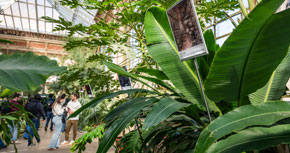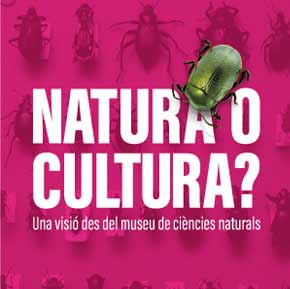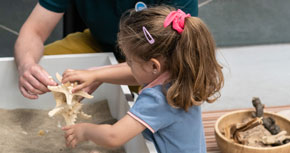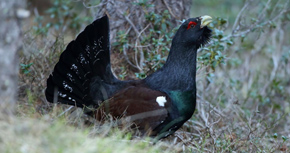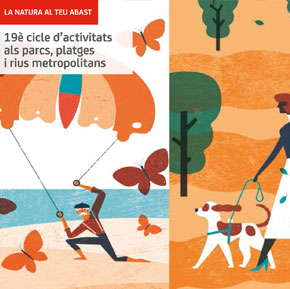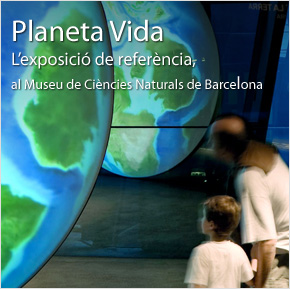- Lloc
- Museu de Ciències Naturals de Barcelona
- Dates
- Dimarts 19 de juliol de 2016
- Horari
- De 17 a 19 h
- Durada
- 2 hores
- Adreçat a
- Membres del Grup SEMBIOS, però també, a qualsevol persona interessada
- Tipus
- Seminari
- Preu
- Activitat gratuïta
Molecular phylogenetic assessment of the longhorn beetles tribe Polyrhaphidini
And its placement among the Lamiinae (Coleoptera: Cerambycidae).
Museu de Ciències Naturals de Barcelona Activitats Molecular phylogenetic assessment of the longhorn beetles tribe Polyrhaphidini
Títol: Molecular phylogenetic assessment of the longhorn beetles tribe Polyrhaphidini and its placement among the Lamiinae (Coleoptera: Cerambycidae)
Polyrhaphidini is a Neotropical and Ethiopian tribe of Lamiinae longhorn beetles (Cerambycidae) with 27 currently recognized species in two genera: Polyrhaphis Audinet-Serville, 1835 and Eudryoctenes Hintz, 1911. In Cerambycidae, phylogenetic relationships have been poorly studied and most current systematic proposals of the suprageneric groups, especially in Lamiinae, still retain the ideas of the pioneering classifications of Lacordaire (1869–1872). To help addressing the lack of modern systematic perspectives on this group of beetles, we focused on the tribe Polyrhaphidini, trying to infer its phylogenetic placement within the Lamiinae based on molecular characters. We analyzed three species of Polyrhaphis (P. grandini, P. kempfi and P. spinipennis) and 133 additional specimens, belonging to 43 out of 78 currently accepted tribes of Lamiinae and six representatives of the subfamilies Prioninae, Parandrinae, Lepturinae and Cerambycinae, which were used as outgroup. The specimens were characterized for several mtDNA and nuclear genes, including cox1, rrnL, CPS domain of the CAD locus, wingless and the ribosomal encoding gene, 28S. Maximum likelihood analyses retrieved Polyrhaphidini as polyphyletic, with the studied representatives occupying divergent supported positions within a larger clade consisting of Polyrhaphidini, Colobotheini, Acanthoderini, Xenofreini, Acanthocinini and Acrocinini. Thus, the limits of Polyrhaphidini need to be reassessed and should be only retained for the species related to the type-species of the tribe, P. spinosa, and the other species should be assimilated to other genus. While the focus of the study were the Polyrhaphidini, the taxonomic density of Lamiinae in our trees allowed an initial assessment of congruence with current tribes. Our data revealed high support for the monophyly of most tribes, although we could identify some discrepancies that should help refining the limits and recognizing valid characters for an objective natural classification of historically conflicting tribes.
Ponent: Diego de Santana Souza, Departament of Entomology, Universidades Federal do Paraná, Curitiba, Brazil.
Recentment ha fet una estada de recerca al laboratori del Dr. Gómez-Zurita (Institut de Biologia Evolutiva)
Idioma vehicular: anglès.

Dins el programa de Seminaris de Biodiversitat, SEMBIO. Debat i intercanvi d’experiències essencialment sobre sistemàtica i evolució animal i filogènia molecular, per bé que altres vessants de l’estudi de la biodiversitat també hi tenen cabuda.
Altres activitats
- Des de 30-06-2025
- Fins a 30-06-2025


